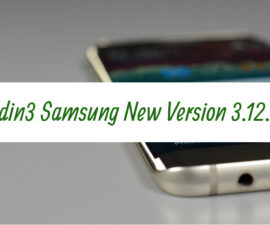One of the most essential features of Android Studio is the Android Studio Emulator, which allows developers to test their applications. They can test the application on the virtual devices. Here, we will provide you with a comprehensive guide on how to download and set up the Android Studio emulator to kick-start your app development journey.
Step 1:
Install Android Studio Before we dive into the emulator setup, you need to install Android Studio on your computer. Android Studio is available for Windows, macOS, and Linux operating systems. Visit the official Android Studio website (https://developer.android.com/studio) and download the latest version suitable for your operating system. Follow the installation instructions provided by the setup wizard, and make sure to include the Android Virtual Device (AVD) Manager during the installation process.
Step 2:
Once you installed the Android Studio, launch the application. You will be greeted with a welcome screen and various options. Select “Start a new Android Studio project” or open an existing project if you have one.
Step 3:
Open AVD Manager To download and set up the Android emulator, you need to open the Android Virtual Device (AVD) Manager. You can access it from the toolbar by navigating to “Tools” -> “AVD Manager.” Alternatively, you can use the AVD Manager icon in the toolbar, which looks like a mobile device with an Android logo.
Step 4:
Create a New Virtual Device In the AVD Manager, click on the “Create Virtual Device” button. You will be presented with a list of device configurations to choose from, such as Pixel, Nexus, and various other manufacturers and models. Select the desired device configuration and click “Next.”
Step 5:
Choose System Image Next, you need to select the system image for the virtual device. The system image represents the version of Android you want to emulate. Android Studio provides a variety of options, including different versions of Android with various API levels and device profiles. Choose the system image that matches your development requirements and click “Next.”
Step 6:
Configure Virtual Device In this step, you can customize additional hardware settings for the virtual device, such as the amount of RAM, internal storage, and screen size. Once you have configured the settings according to your preferences, click “Finish” to create the virtual device.
Step 7:
Download System Image If you didn’t have the required system image installed on your computer, Android Studio will prompt you to download it. Click on the “Download” button next to the system image you need, and Android Studio will take care of the download and installation process for you.
Step 8:
Once the virtual device is created and the system image is installed, you can launch the emulator by selecting the virtual device from the AVD Manager list and clicking on the “Play” button (a green triangle icon). Android Studio will start the emulator, and you will see a virtual Android device running on your computer screen.
Conclusion:
Setting up the Android Studio emulator is a crucial step for Android app developers. It allows them to test their applications on virtual devices before deploying them on physical ones. By following the step-by-step guide outlined in this article, you should now have a clear understanding of how to download and set up the Android Studio emulator. Embrace the power of the Android emulator to iterate and refine your app development process. Ensure that your applications deliver a seamless experience to Android users.






